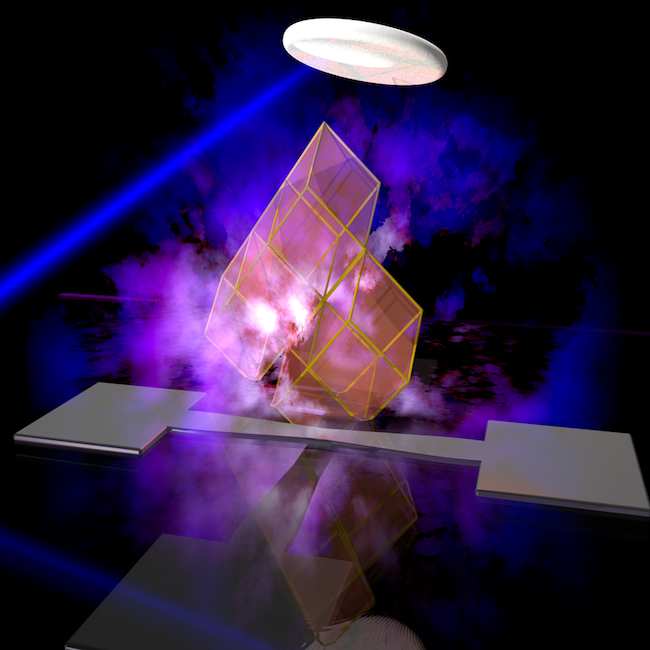Ferroic materials in the spotlight in Nature Materials
Published on 16/11/2018
In collaboration with their scientific peers, two researchers from the Luxembourg Institute of Science and Technology (LIST) specialized in ferroic materials for transducers were able to highlight their latest findings in the renowned Nature Materials international scientific magazine.
Together with collaborators Yingfen Wei and Beatriz Noheda (University of Groningen), as well as LIST visiting professor Brahim Dkhil (CentraleSupélec, France), LIST researchers Jorge Íñiguez and Hong Jian Zhao contributed to the discovery of a new phase of a new ferroelectric based on technology-friendly HfO2. Their results point thin films of simple oxides as a vastly unexplored class of nanoscale ferroelectrics and can be found in the article “A rhombohedral ferroelectric phase in epitaxially strained Hf0.5Zr0.5O2 thin films”, published on 22 October 2018 in Nature Materials.
Ferroic materials expertise at LIST
Work at LIST focused on the computational modelling of the ferroelectric phases of HfO2-ZrO2, employing structural-prediction algorithms to identify the structure obtained experimentally in Groningen and characterized by transmission electron microscopy in Paris. The simulations carried out by Zhao and Íñiguez were key to understand the stabilization under specific epitaxial conditions of this phase, and to explain the large ferroelectric polarization values it presents.
This latest example of “Made in Luxembourg” research being highlighted in the world-class publication was supported by FNR’s PEARL (Grant FNR/P12/4853155 COFERMAT) and CORE (Grant FNR/C15/MS/10458889 NEWALLS) programmes, while Dkhil benefited from mobility grant (INTER/MOBILITY/16/11259210 MULTICALOR) supporting collaboration between researchers in Luxembourg and abroad.
Nature Materials article abstract
Hafnia-based thin films are a favoured candidate for the integration of robust ferroelectricity at the nanoscale into next-generation memory and logic devices. This is because their ferroelectric polarization becomes more robust as the size is reduced, exposing a type of ferroelectricity whose mechanism still remains to be understood. Thin films with increased crystal quality are therefore needed.
LIST researchers reported the epitaxial growth of Hf0.5Zr0.5O2 thin films on (001)-oriented La0.7Sr0.3MnO3/SrTiO3 substrates. The films, which are under epitaxial compressive strain and predominantly (111)-oriented, display large ferroelectric polarization values up to 34 μC cm−2 and do not need wake-up cycling. Structural characterization reveals a rhombohedral phase, different from the commonly reported polar orthorhombic phase. This finding, in conjunction with density functional theory calculations, allows the researchers to propose a compelling model for the formation of the ferroelectric phase.
The figure illustrating this news article is an artistic rendering of the conditions leading to the growth of this new phase of HfO2-ZrO2.
For any question on this topic, send an email to Jorge Íñiguez and Hong Jian Zhao.
Share this page:







